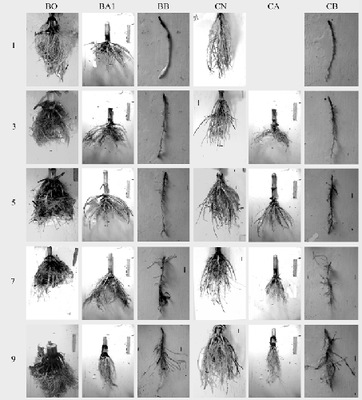This shows the process of root crown phenotyping for the maize root system
This is a method to visually score 10 root architectural traits of the root crown of an adult maize plant in the field in a few minutes. Numbers, angles and branching pattern of crown and brace roots are assessed visually at flowering.
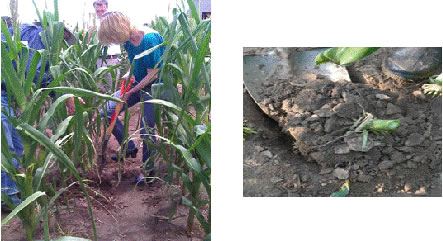
At harvest roots are excavated by removing a soil cylinder of 40 cm diameter and a depth of 25 cm with the plant base as the horizontal center of the soil cylinder.
In a first step the excavated root crowns are then shaken briefly to remove a large fraction of the soil adhering to the root crown.
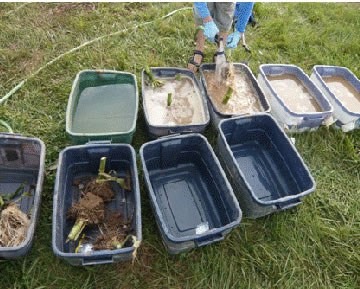
Most of the remaining soil is then removed by soaking the root crown in water amended with a detergent
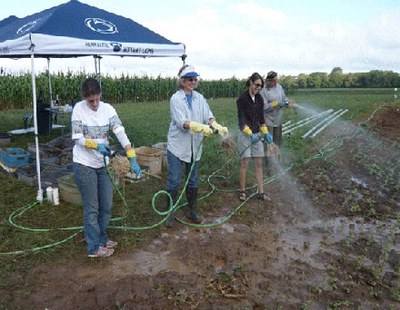
In a third step remaining soil particles are removed from the root crown by vigorous rinsing at low pressure.
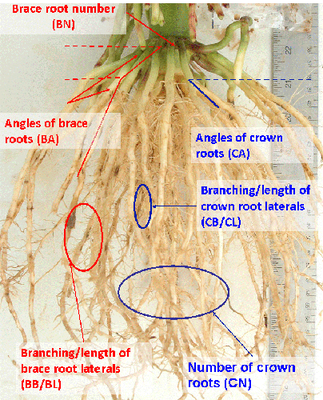
The clean roots are visually scored for the following traits (Fig. 1): Numbers of above-ground whorls occupied with brace roots (BW); brace root number (BO); angle of the 1st and 2nd arm of brace roots originating from the first and second whorl in relation to horizontal (BA1a, BA1b, BA2a, BA2b; The first arm of brace roots represents the basal part of the brace root growing on an initial trajectory, and the second arm represents the second part of the brace root growing at a trajectory angled in relation to the trajectory of the first arm); the branching of brace roots (BB); and the numbers (CN), angles (CA) and branching (CB) of crown roots. Traits were assigned values from one to nine where one indicates shallow root angles (10°), low root numbers and a low branching density (0.5 lateral root cm-1). Nine indicates steep root angles (90°), high numbers and a high branching density (7 lateral roots cm-1).
Images representative for each trait-by-score combination
